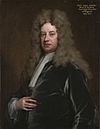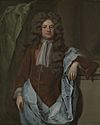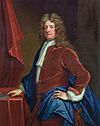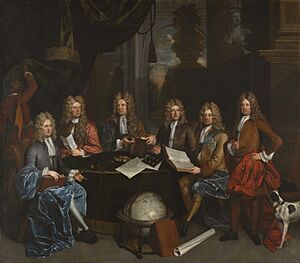Whig Junto facts for kids
The Whig Junto was a special group of important politicians in the Whig Party in Great Britain. They were very powerful during the time of King William III and Queen Anne. These leaders often helped run the government.
The main members of the Whig Junto were:
- John Somers (later Baron Somers)
- Charles Montagu (later Earl of Halifax)
- Thomas Wharton (later Marquess of Wharton)
- Edward Russell (later Earl of Orford)
People who didn't like them sometimes called them "the five tyrannising lords." Other important people who worked with the Junto included Sir John Trenchard and Thomas Tollemache.
The Whig Junto's Story
The Whig Junto members started their political careers in 1689. They were elected to the House of Commons, which is part of the British Parliament. They were given smaller jobs in the government. Because they were good at their jobs, a powerful person named Robert Spencer, 2nd Earl of Sunderland noticed them.
The Junto started to become very important in the government around 1693. They talked to the King and Sunderland through another Whig leader, the Duke of Shrewsbury.
As the members of the Junto became more powerful, they moved from the House of Commons to the House of Lords. For example, Somers became a Lord in 1697. Russell became the Earl of Orford in 1697, and Montagu became Baron Halifax in 1700. As they moved to the House of Lords, their power in the House of Commons became weaker. By 1700, the Junto had lost much of its influence.
In 1701, some members of the Junto, like Somers, Orford, and Halifax, were accused of wrongdoing. But they managed to clear their names. Later that year, they seemed ready to return to power. King William III wanted their help to get support for the War of the Spanish Succession.
However, King William died in March 1702. This delayed the Junto's return to power. Queen Anne did not like them. She chose to have Tory politicians in her government instead.
The Junto's connection to the son of the elder Sunderland helped them. This was because Sunderland's son was married to the daughter of the Queen's favorite couple, the Duke and Duchess of Marlborough. Also, the Junto strongly supported the war, which was different from the Tories who were not as sure about it.
In 1705, a politician named Lord Cowper, who the Queen liked, became a Lord Keeper. In 1706, Sunderland became a Secretary of State, even though the Queen disliked him even more than the other Junto members.
After Harley resigned in 1708, the Duke of Marlborough and his friend Godolphin needed the Junto more and more. The Junto members returned to important government jobs. Somers became Lord President, Wharton became Lord Lieutenant of Ireland, and Orford became First Lord of the Admiralty.
The Queen's relationship with the Marlboroughs and Godolphin became difficult because of how much the government relied on the Whig Junto. In 1710, Godolphin and the Junto Whigs were forced out of power. The Junto then led the opposition in the House of Lords against the new government's plan for peace. To stop them, the government created new Lords so they would have enough votes to pass the peace treaty.
The Junto's Legacy
The Whig Junto also inspired a group in North America. In 1727, Benjamin Franklin started his own "Junto" group in Philadelphia after he returned from London.
The word "Junto" comes from "Junta". This is a Spanish and Portuguese word for a group of people who meet to make decisions. In the 1700s, it didn't mean a military government like it sometimes does today.
Later Whig Governments
The Junto members returned to power within a year after George I became King in 1714. However, most of them died soon after: Wharton and Halifax in 1715, and Somers in 1716. Orford and Sunderland also had disagreements, and Orford stopped holding office after 1717.
Even though the original Junto members were gone, the Whig Party took full control of the government in 1715. They stayed in power for a very long time. This period saw the creation of the first recognized Prime Minister, Robert Walpole. This long period of Whig power continued until King George III became king in 1760. He tried to balance things by creating more Lords who were Tories.
|





